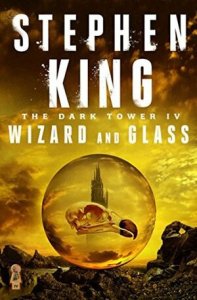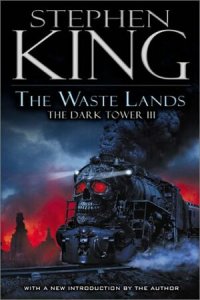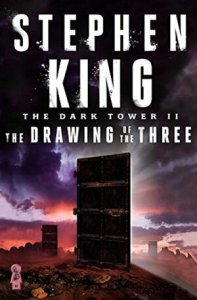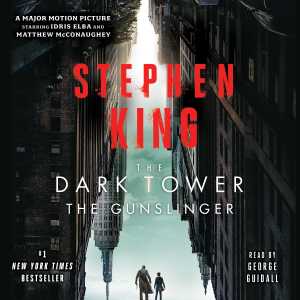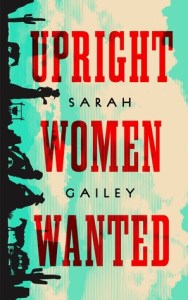Title: Wizard and Glass
Series: The Dark Tower #4
Author: Stephen King
Genre: Low Fantasy Horror Western with strong Post-Apocalyptic vibes
Trigger Warnings: Death, parent death, blood, gore, violence, injury, fire/fire injury, animal death, animal suffering, guns, fire, infidelity, sexual content, sexual content between consenting minors, sexual assault, adult/minor relationship, forced marriage, verbal abuse, pandemic, excrement
Spoiler Warning: This book is 4th in a series, and reading beyond this point will expose you to major spoilers of previous books.
Back Cover:
Roland the Gunslinger, Eddie, Susannah, and Jake survive Blaine the Mono’s final crash, only to find themselves stranded in an alternate version of Topeka, Kansas, that has been ravaged by the superflu virus. While following the deserted I-70 toward a distant glass palace, Roland recounts his tragic story about a seaside town called Hambry, where he fell in love with a girl named Susan Delgado, and where he and his old tet-mates Alain and Cuthbert battled the forces of John Farson, the harrier who – with a little help from a seeing sphere called Maerlyn’s Grapefruit – ignited Mid-World’s final war.
Review:
I waited a while to pick up this one after finishing The Waste Lands, mainly because I can read a Dark Tower book in two days via audiobook at work but it takes the friend I’m reading the series with a month or two to get through each book. But this one picks up exactly where the last book left off, with the riddle contest with Blaine the Mono.
There are two different stories going on in this book. There’s the frame story with Roland and the ka-tet traveling along the path of the beam towards the Dark Tower. But a good three-quarters of the story is backstory, framed as Roland telling part of his story to Eddie, Susannah, and Jake.
It was kind of interesting to get that history. Susan has been mentioned as part of Roland’s past previously, but now we get to find out who she was, how Roland met her, and what tragedy happened that caused Roland so much pain and regret. There’s also more of Alain and Cuthbert, who have also been mentioned previously. This story expands on their personalities so we get to know them a little bit better – although it doesn’t cover what tragedy happened to them.
If the purpose of the story had been to fill in those gaps in Roland’s history, it would have been significantly shorter. I believe this is the longest book in the series, and the story of Roland and Susan is the reason. I did not like it all that much, to be honest. Roland and friends were focused on preventing or winning a war, but since we’ve spent the previous three Dark Tower books in a world where the war happened and went very badly, I knew how it ultimately ended and didn’t much care how it played out.
The rest of the plot was Roland’s young love with Susan, and it turns out I have very little patience for star-struck young love. So much of the romance had me rolling my eyes, wishing Roland would think with his brain instead of his dick and the story would just move along already. Since it was Roland’s story told by Roland, Alain and Cuthbert were not major contenders for reader connection, and Roland and Susan were too busy being stupid for love for me to enjoy them all that much. Roland himself, despite being fourteen at this point, is pretty much the same as the older version telling the story – less jaded and significantly more horny, but still clever, secretive, and dedicated to being a gunslinger.
The annoying thing is that I was actually interested in the parts of the story that were about our normal protagonists – Roland, Eddie, Susannah, and Jake. They finished their ride with Blaine the Mono, ended up in a weird parallel version of Kansas, and had a bizarrely Wizard of Oz-themed encounter before continuing on the journey. That part, I enjoyed. The backstory I think should have been about half its length. (Although to be fair, if you think about all seven books as one single story as opposed to each book being an entry in a series, proportionally that’s a fairly reasonable length for telling a backstory. I just didn’t particularly enjoy it all stuffed in one book.)
This is not my favorite of the Dark Tower books. However, I am still enjoying Roland, Eddie, Susannah, and Jake’s journeys through strange and interesting post-apocalyptic worlds as they hunt for this Dark Tower. I will be continuing the series – I just hope the next book focuses more on the present than the past.
The Dark Tower series:
- The Gunslinger
- The Drawing of the Three
- The Waste Lands
- Wizard and Glass
- Wolves of the Calla
- Song of Susannah
- The Dark Tower

